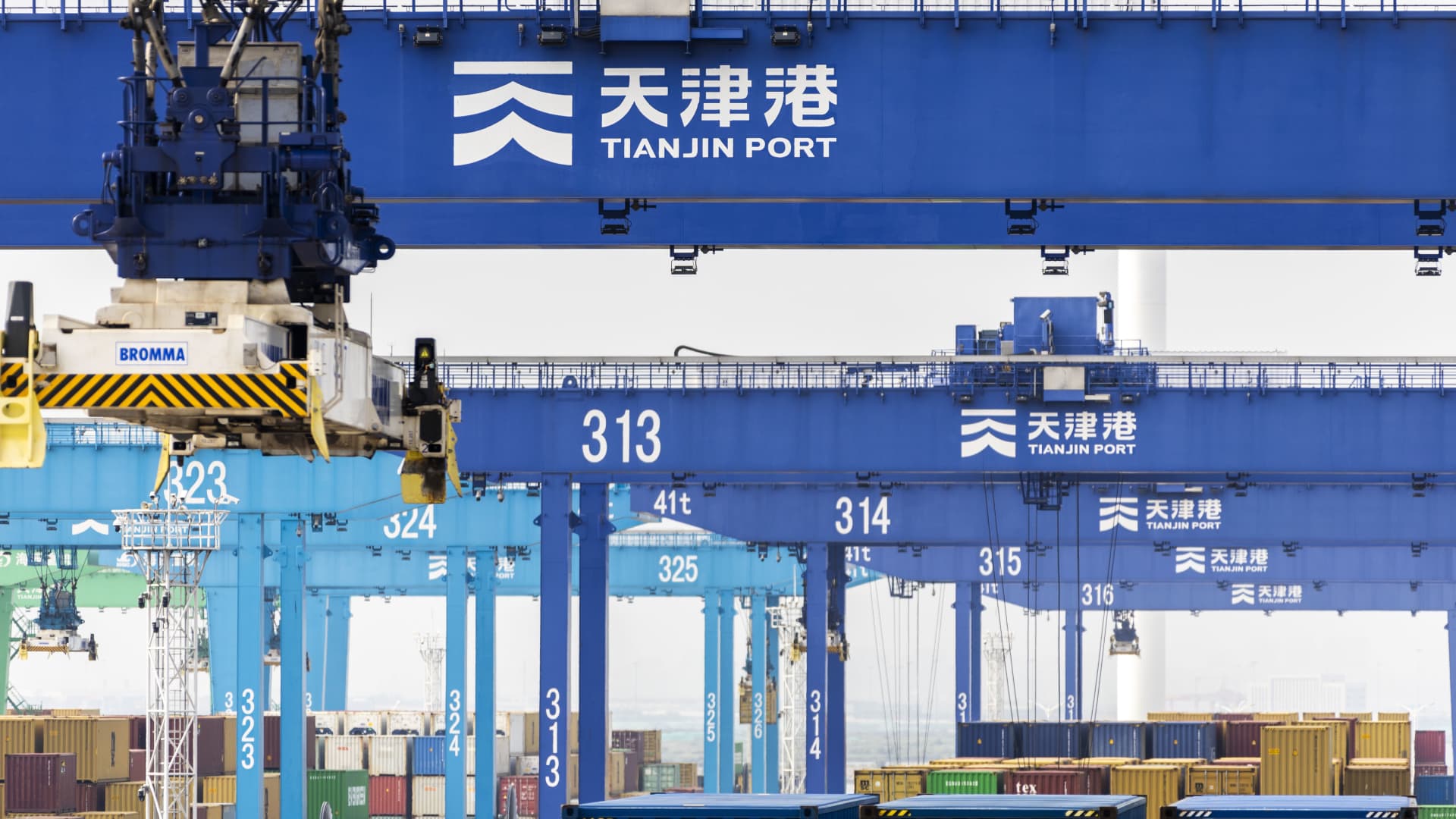Containers stacked at the “smart zero-carbon” terminal at Tianjin Port on Aug. 30, 2025, in Tianjin, China.
Vcg | Visual China Group | Getty Images
As if the ever-changing trade mandates from U.S. President Donald Trump weren’t hard enough for companies, here comes a new complication: the federal appeals court.
On Friday, the U.S. Court of Appeals for the Federal Circuit ruled that Trump’s imposition of “reciprocal” tariffs on countries, as well as those on China, Canada and Mexico ostensibly in relation to fentanyl trafficking, was an overreach of his authority.
That said, those tariffs will be allowed to persist until Oct. 14 so that the Trump administration has time to appeal to the U.S. Supreme Court.
At first blush, this development might seem to benefit stocks, which have already had a rip-roaring August. For the month, the S&P 500 added nearly 2%, the Dow Jones Industrial Average advanced over 3% and the Nasdaq Composite rose 1.6%.
However, tariffs flickering on and off might be more anxiety-inducing than the certainty of planning strategies around tackling those duties.
And that means potential volatility in markets. August’s gains could be tested in September — the worst month for the S&P 500, historically speaking. Investors might hope to score consecutive months of gains but, at this moment, the added uncertainty around trade policies might diminish those chances.
— CNBC’s Erin Doherty contributed to this report
What you need to know today
Most Trump tariffs are illegal, U.S. appeals court rules on Friday. Nevertheless, the court allowed the tariffs to run until Oct. 14 to give the Trump administration time to appeal the decision to the Supreme Court. Here are the tariffs affected by the ruling.
Reject ‘Cold War mentality,’ Xi Jinping says. The Chinese president made that remark at a security conference on Sunday, which comes as Beijing seeks to portray itself as a peacemaker amid persistent global trade tensions with the White House.
China’s factory activity unexpectedly expands in August. The RatingDog manufacturing purchasing managers’ index came in at 50.5, sharply beating the 49.7 estimate in a Reuters poll. The reading’s the highest since March and beats July’s 49.5.
U.S. stocks had a winning August. Major U.S. indexes notched solid gains for the month. On Monday, Hong Kong-listed shares of Alibaba jumped on better-than-expected quarterly income, but BYD shares in Hong Kong fell amid a sharp drop in profit in the June quarter.
[PRO] August jobs number in focus. After July’s dismal report made Trump fire the U.S. commissioner of labor statistics, investors will keep a close eye on August’s report, out Friday, not just for the data but also the president’s reaction.
And finally…
U.S. Federal Reserve Chair Jerome Powell and U.S. President Donald Trump.
Evelyn Hockstein | Reuters
Here’s what it really means for Trump to get control of the Federal Reserve board
President Donald Trump’s effort to sack Federal Reserve Governor Lisa Cook is about more than firing someone: It’s a maneuver that, if successful, would mark a seismic shift for an institution that for ages has been considered above politics.
Should Trump get a majority of members on the board of governors to vote the way he wants — and the evidence right now, to be sure, is scant that he can ever achieve such a goal — it would give him access to key levers that control the economy as well as the nation’s financial infrastructure.
— Jeff Cox





